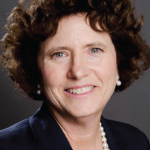Avoid the Onset of Complacency
After a spending many years in the practice of medicine, particularly in rheumatology, one should become alert to the threat of the insidious onset of complacency and a tendency to become less critical of yourself and your skills. The longer you practice, the more you tend to accumulate patients who like you, laugh at your jokes, tolerate your inadequacies and reinforce your every action. Those who are dissatisfied with the care they receive leave early for greener pastures. Eventually, you become part of a large, happy family populated with grateful patients and strains of Kumbaya playing in the background.
I believe two factors have been critical in my career to help ward off this situation:
1. Patients: They are always a challenge, restorative in so many ways and bring something new to the table with each visit. They provide perspective. When you care for patients, you learn you’re never as bad as you fear you are when things go wrong or as great as you aspire to be when things go well. Sometimes you’re the windshield, and sometimes you’re the bug.
2. Involvement in the education of young physicians and relationships with colleagues: During my residency years I became convinced my goal was to become a clinician and teacher in an academic medical center, although such positions did not exist at that time. I was advised by several colleagues that my attraction to clinical teaching was essentially a result of the collegial relationships I enjoyed with my fellow house officers. I was told that as I became more senior and no longer shared experiences and attitudes that were age specific, I would outgrow my enthusiasm for this activity. This did not happen.
I believe the fun and collegiality of a career as a rheumatologist persist and are based on common goals, experiences and challenges related to patient care.
Ronald J. Anderson, MD, currently in his sixth decade of clinical teaching and patient care, has spent the majority of his career at Brigham & Women’s Hospital and Harvard Medical School. He was named a Master of the ACR in 2001 and in 2012 was honored by the ACR as the initial recipient of the Distinguished Training Program Director Award.
References
- O’Dell JR. The happiest specialty: Rheumatologists are #1. The Rheumatologist. 2012 Jul;6(7).
- Prashker MJ, Meenan RF. Subspecialty training: Is it financially worthwhile? Ann Intern Med. 1991 Nov 1;115(9):715–719.
- Anderson RJ. Nine year follow up on patients presenting with unclassifiable systemic rheumatic disease (USRD) [abstract]. Arthritis Rheum. 2000 Sep;43(Suppl 9):S296–S297.
This article was adapted and reprinted from a chapter in Lessons Learned in the Care of Patients: A Rheumatologist’s Perspective, by Ronald J. Anderson, MD, with the expressed permission of the author.

